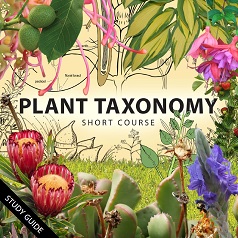 If you look close enough, you can see plant leaves can vary a great deal between different types of plants.
If you look close enough, you can see plant leaves can vary a great deal between different types of plants.
The size and shape can vary, as can the colour; but also the texture, the arrangement of veins and whether parts of the leaf is curled down, up, flat or something else. Leaf characteristics can also be affected by disease or environmental condition, so if you use leaves to identify a plant, it is important you use normal, healthy leaves.
Our Plant Taxonomy short course (launched June/July 2018) teaches you about every aspect of scientific plant identification. You learn to observe leaves more closely, and what to look out for in the leaf variations. You also learn to observe fruits, flowers and other parts of a plant; and how these various characteristics can be identifies and used to determine exactly what plant you are looking at.